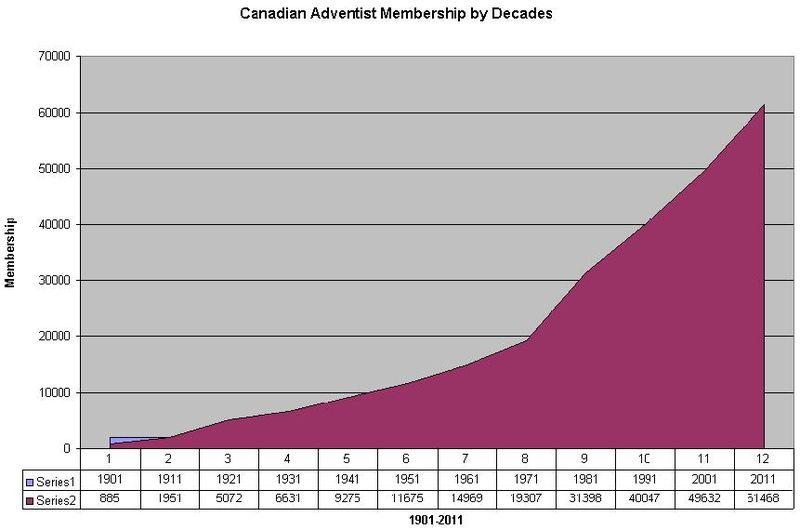Social and political engagement
The SDACC has been engaged in social and political activities throughout its history.
Social engagement
Like Adventists everywhere and throughout their history, individuals and entities of the SDACC have been engaged in promoting healthful living and operating healthcare facilities. These efforts have included the former Branson Hospital (Toronto), facilities for seniors in New Brunswick, Ontario, Manitoba, Saskatchewan, Alberta, and British Columbia.
Since 1990, the SDACC, in association with about thirty faith communities, has been a member of the Canadian Foodgrains Bank. [15] [16]
Political engagement
In 1906, Adventists in Canada opposed the efforts of the Lord's Day Alliance and others in promoting a Sunday-observance bill in parliament. In the process, Adventist leaders met with Prime Minister Wilfred Laurier and his Minister of Justice. [17]
In related areas of interest, Canadian Adventists, who were sometimes arrested for working on Sunday, supported the efforts of John G. Diefenbaker and others in advocating for a Canadian Bill of Rights. [18]
Local conferences
The SDACC includes seven subdivisions ("local conferences"). [1]
Alberta Conference
The Alberta Conference, organized in 1906, with sixty-eight churches and 12,338 members serves a population of c. 4.5 million in the Province of Alberta and part of the Northwest Territories. Under the leadership of President Jeff Potts, the conference operates four schools (Chinook Winds Adventist Academy, Coralwood Academy, Mamawi Atosketan Native School, and Prairie Adventist Christian eSchool) and Foothills Seventh-day Adventist Camp (used for camp meetings and youth camps).
British Columbia Conference
The British Columbia Conference, organized in 1906, with eighty-one churches and 10,793 members serves a population of c. 5.4 million in the Province of British Columbia, the Yukon Territory, and part of the Northwest Territories. Under the leadership of President [19] Brad Thorp, the conference operates six schools (Cariboo Adventist Academy, Deer Lake Seventh-day Adventist School, Fraser Valley Adventist Academy, Okanagan Christian School, Peace Christian School, and West Coast Adventist Christian School), Camp Hope (used for camp meetings), and Mountain View Summer Camp (used for youth camps).
Manitoba-Saskatchewan Conference
The Manitoba-Saskatchewan Conference, organized in 1903, with thirty-five churches and 4,074 members serves a population of c. 2.6 million in the Provinces of Manitoba and Saskatchewan and the Nunavut Territory. Under the leadership of President Charles Ed Aguilar II, the conference operates Camp Whitesand (used for camp meetings and youth camps).
Maritime Conference of the Seventh-day Adventist Church, Inc.
The Maritime Conference Conference, organized in 1902, with twenty-seven churches and 1,795 members serves a population of c. 2 million in the Provinces of New Brunswick, Nova Scotia, and Prince Edward Island. Under the leadership of President David Miller, the conference operates one school (Sandy Lake Academy) and Camp Pugwash (used for camp meetings and youth camps).
Seventh-day Adventist Church in Newfoundland and Labrador
The SDA Church in Newfoundland and Labrador, organized in 1895, with eight churches and 503 members serves a population of c. 0.5 million in the Province of Newfoundland and Labrador. Under the leadership of President Ken Corkum, the conference operates a radio station (Lighthouse FM [ VOAR-FM 96.7] [20] ) and Woody Acres Camp (used for camp meetings and youth camps).
Ontario Conference
The Ontario Conference, organized in 1899, with 133 churches and 35,517 members serves a population of c. 15 million in the Province of Ontario. Under the leadership of President Mansfield Edwards, the conference operates one school (Crawford Adventist Academy) and Camp Frenda (used for youth camps).
Quebec Conference
The Quebec Conference, organized in 1880, with forty-two churches and 9,171 members serves a population of c. 8.7 million in the Province of Quebec and the French possessions of Saint Pierre and Miquelon. Under the leadership of President Ngoy Kyala, the conference operates one media facility (Il Est Ecrit [ It Is Written]).
This page is based on this
Wikipedia article Text is available under the
CC BY-SA 4.0 license; additional terms may apply.
Images, videos and audio are available under their respective licenses.


